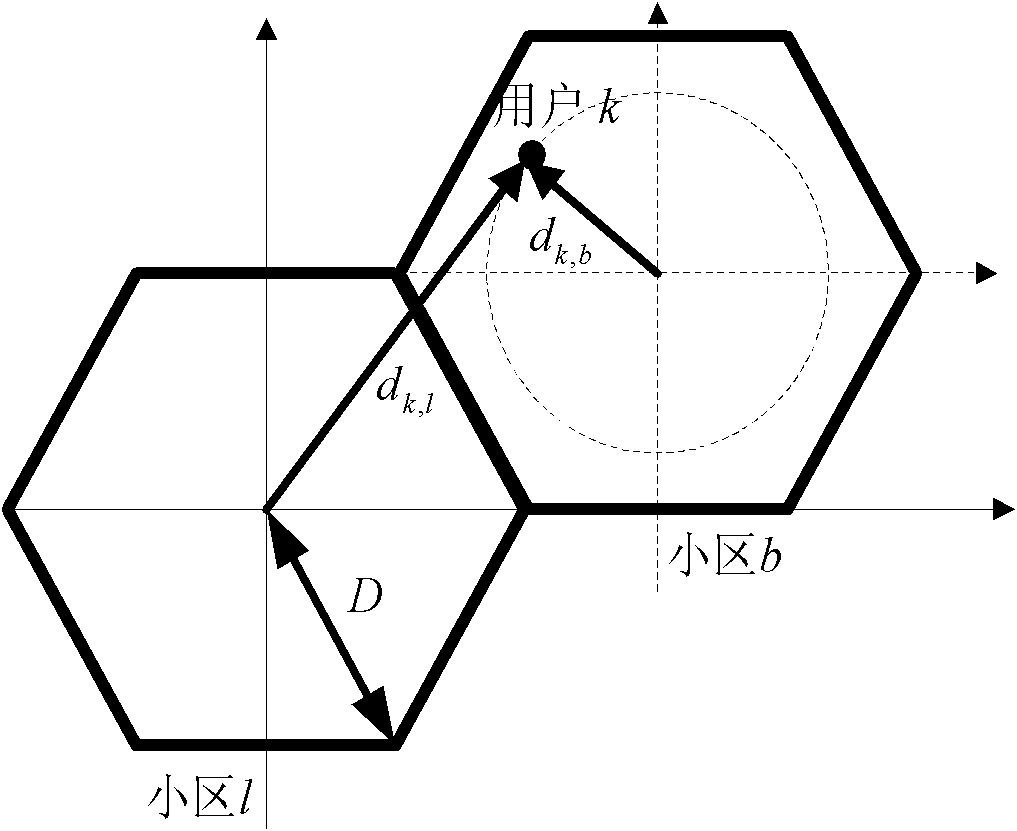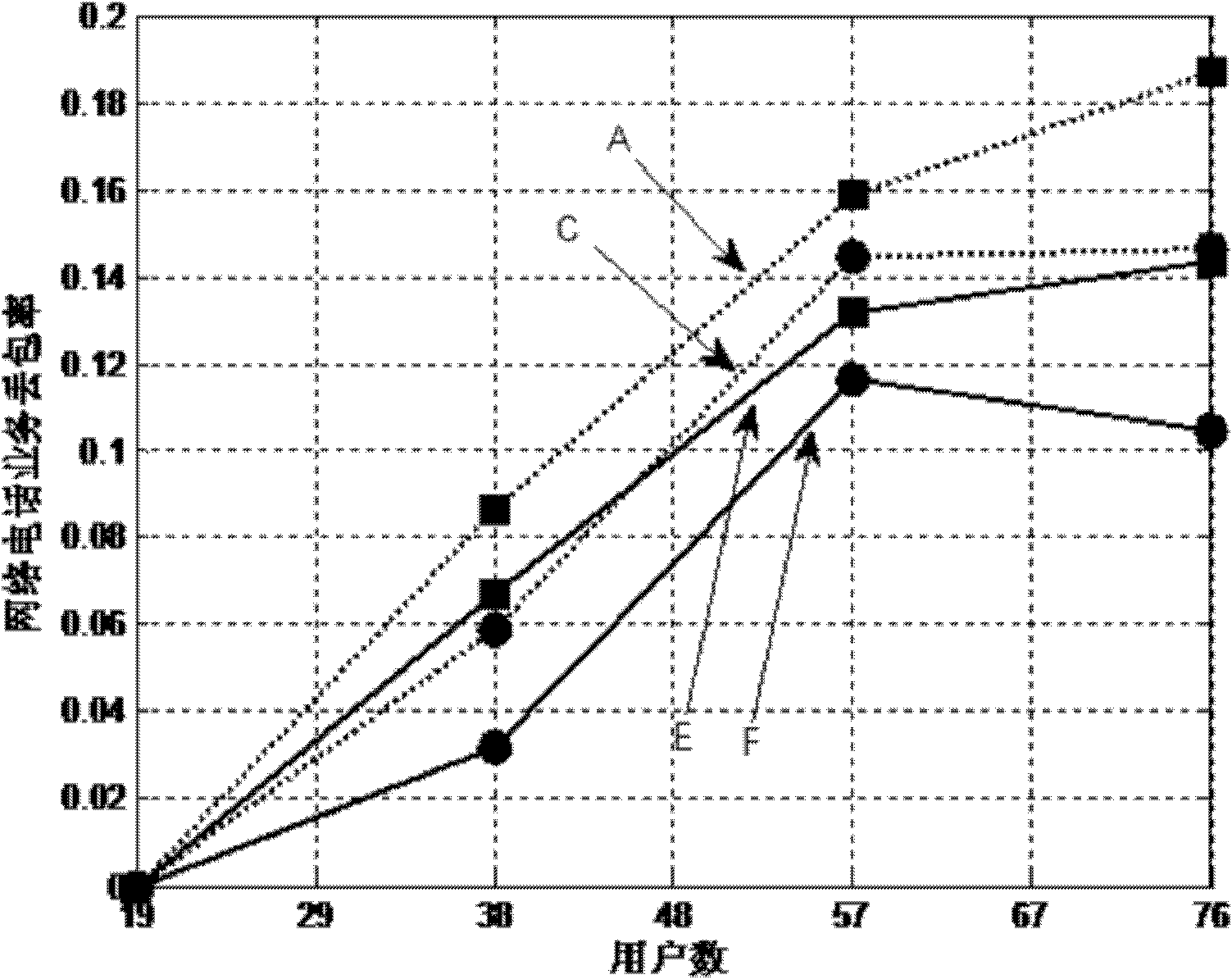Multi-cell resource allocation method introducing mobile resource reserve mechanism
A technology for resource allocation and resource movement, applied in network traffic/resource management, electrical components, wireless communication, etc., can solve problems such as affecting mobile user service experience, deteriorating user service experience, not considering reserved resources, etc., to avoid timeout The effect of packet loss, avoiding interference, and maximizing system throughput
- Summary
- Abstract
- Description
- Claims
- Application Information
AI Technical Summary
Problems solved by technology
Method used
Image
Examples
Embodiment 1
[0039] In this embodiment, the downlink condition of the Long Term Evolution (LTE) system is considered. Suppose the channel bandwidth is 10MHz, the carrier frequency is 2GHz, and the channel adopts the Rayleigh channel model. The system contains a total of 1024 subcarriers. After removing the left and right guard bands, DC subcarriers and pilot subcarriers, there are a total of 600 data subcarriers, which are divided into 50 resource blocks, and each resource block contains 12 adjacent data subcarriers. carrier. Power is shared equally over each resource block. There are 14 data OFDM symbols in the downlink subframe, and one frame (10ms) includes 10 subframes. Therefore, one resource block has 12*14=168 subcarriers. The system hysteresis factor Hys is 3dB when switching. Resource reservation probability threshold p thre is 0.1.
[0040] Corresponding to real-time and non-real-time services, this embodiment uses typical service VoIP and hypertext transfer protocol (FTP) ...
PUM
 Login to View More
Login to View More Abstract
Description
Claims
Application Information
 Login to View More
Login to View More - Generate Ideas
- Intellectual Property
- Life Sciences
- Materials
- Tech Scout
- Unparalleled Data Quality
- Higher Quality Content
- 60% Fewer Hallucinations
Browse by: Latest US Patents, China's latest patents, Technical Efficacy Thesaurus, Application Domain, Technology Topic, Popular Technical Reports.
© 2025 PatSnap. All rights reserved.Legal|Privacy policy|Modern Slavery Act Transparency Statement|Sitemap|About US| Contact US: help@patsnap.com



